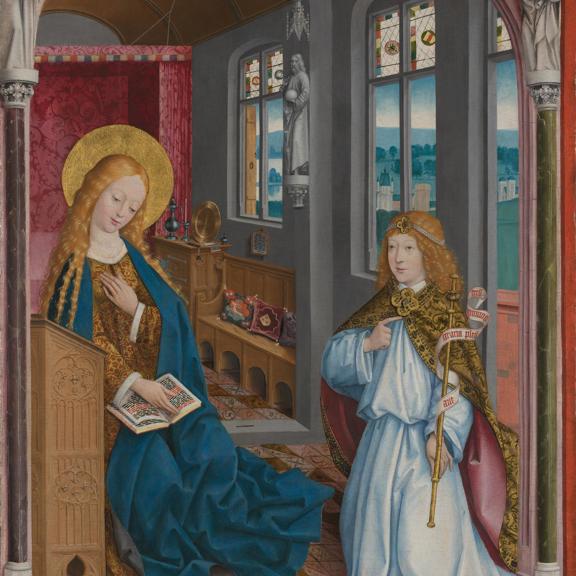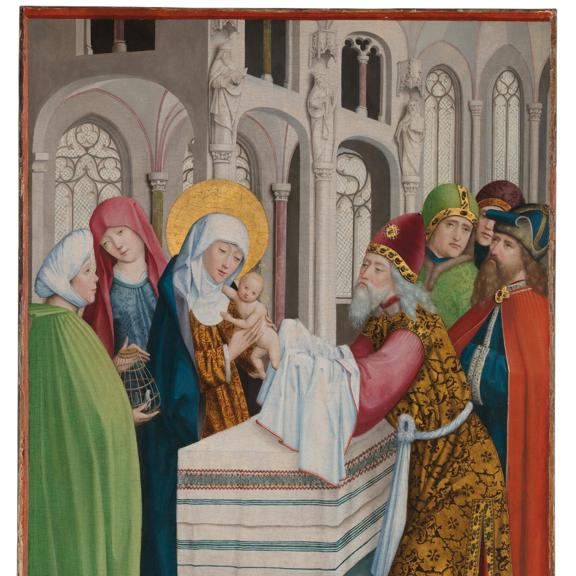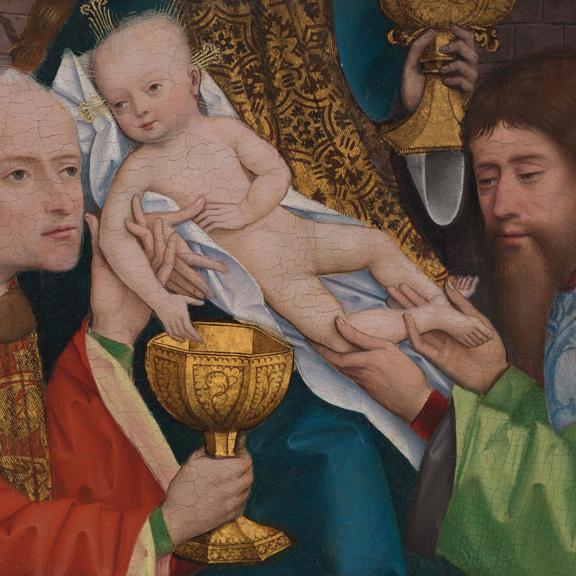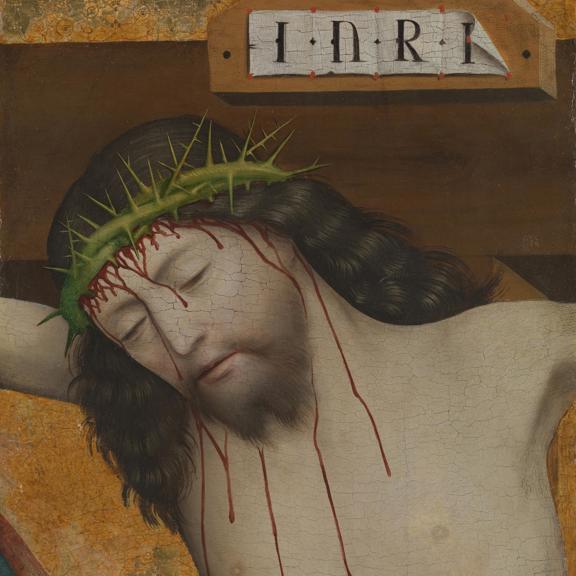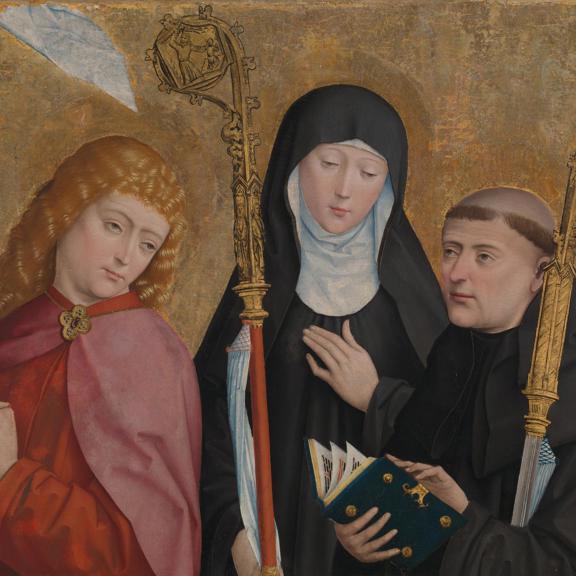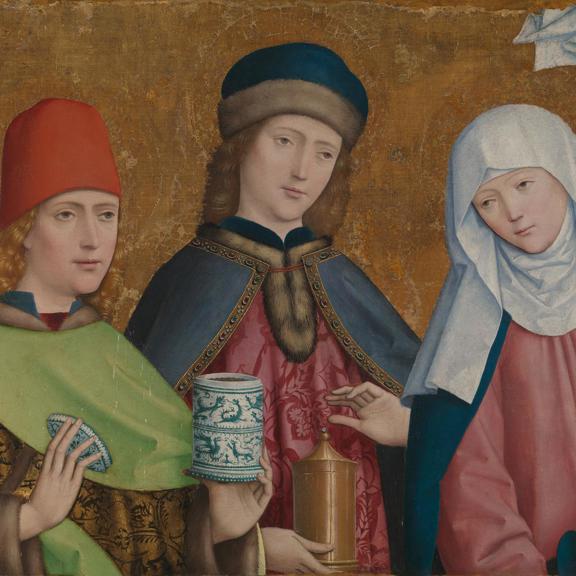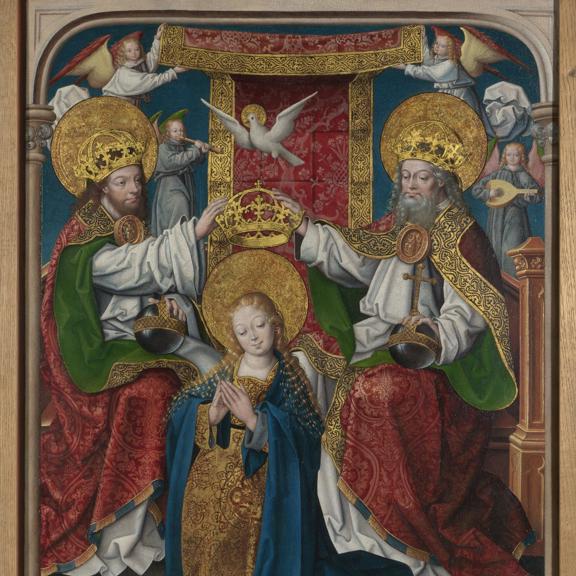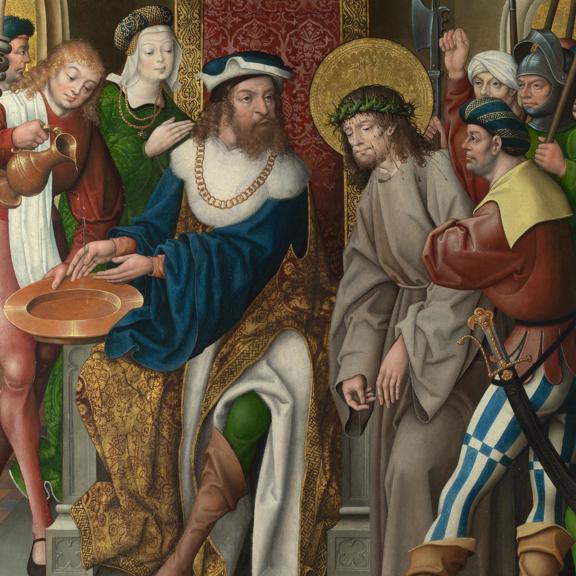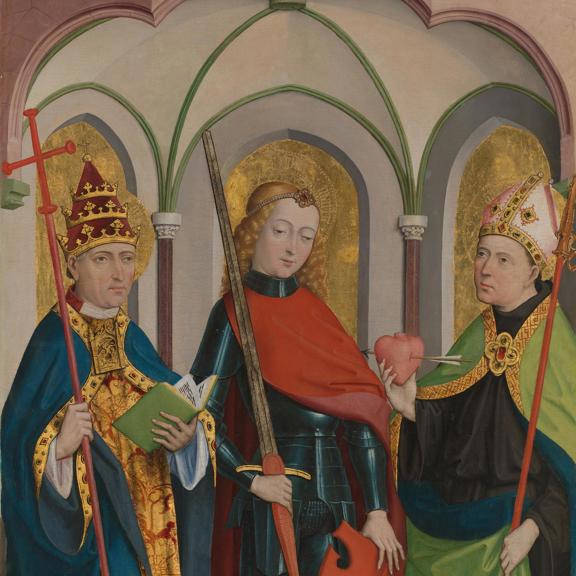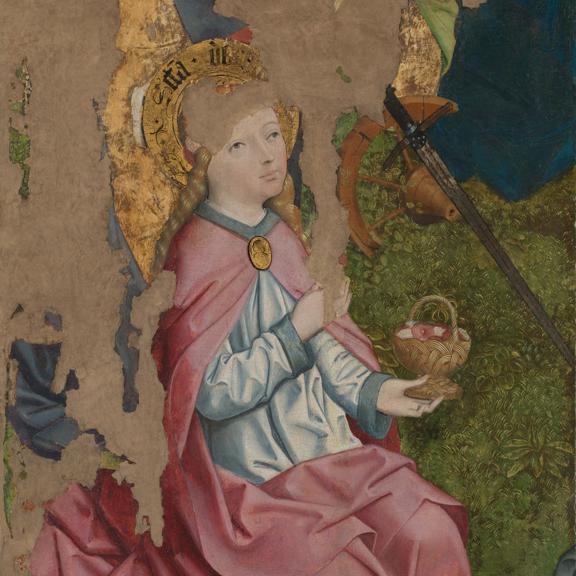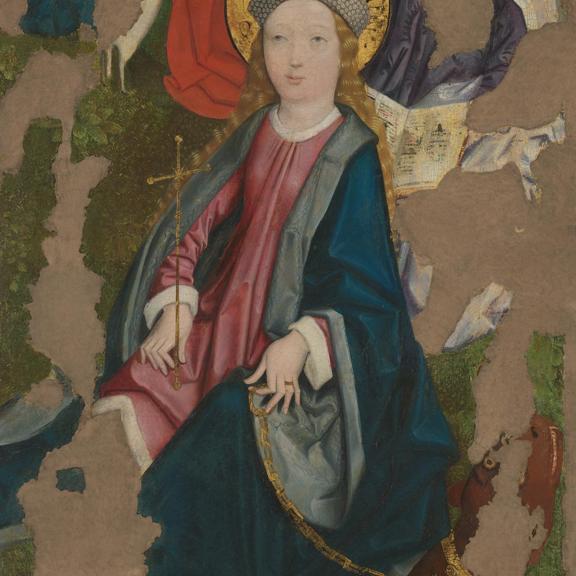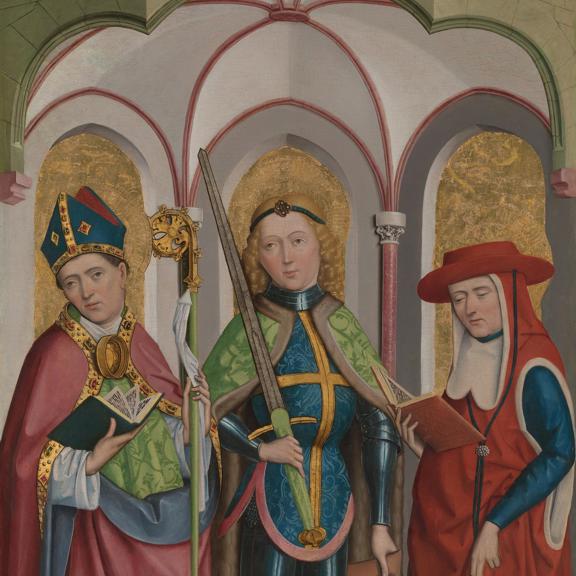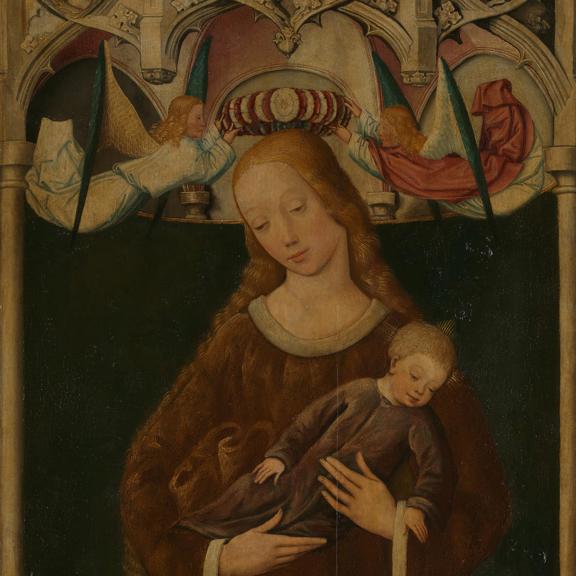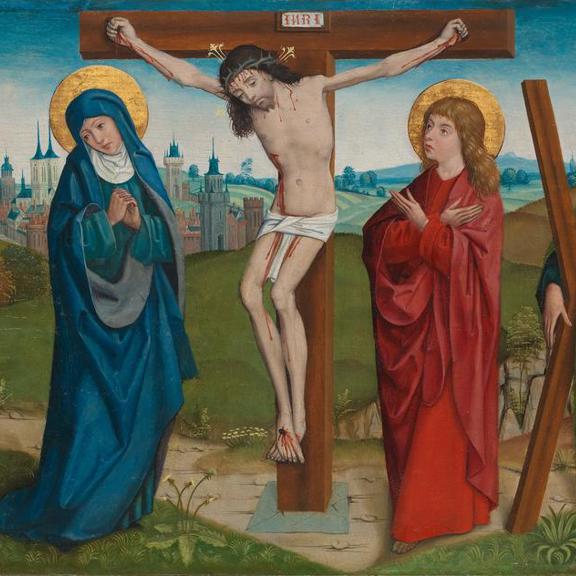Master of Liesborn, The Presentation in the Temple
The Liesborn Altarpiece
These images once formed part of a large altarpiece made for the high altar of the monastery church of the Benedictine abbey at Liesborn, in Westphalia in north-west Germany. The main panel consisted of a central scene of the Crucifixion, flanked on either side by two smaller individual scenes from Christ’s infancy.
In 1517 two shutters painted by the Master of Cappenberg were added to either side of the Master of Liesborn’s original panel. These showed the events leading up to Christ’s crucifixion, his resurrection and events that occurred afterwards, such as the Pentecost.
The altarpiece was removed in the eighteenth century and later cut up; only fragments survive. Six images from the main panel are in the National Gallery’s collection: three fragments of the central Crucifixion, two complete flanking images (The Annunciation and The Presentation in the Temple) and a fragment of The Adoration of the Kings, another flanking scene. Two further images come from the shutters.
These paintings are fragments from an altarpiece – one of the largest of its time – made for the high altar of the monastery church of the Benedictine abbey at Liesborn, in Westphalia in north-west Germany. The high altar was consecrated in 1465 by Abbott Heinrich von Kleve and was dedicated to the Virgin Mary and Saints Cosmas, Damian and Simeon, all of whom feature on the altarpiece.
The main panel consisted of a central scene of the Crucifixion flanked on either side by two smaller individual scenes from Christ’s infancy, one on top of the other. In 1517, about 40 years after the main panel was completed, two shutters were commissioned from a different artist, the Master of Cappenberg. These were painted on both sides, and depicted the events leading up to Christ’s death, his resurrection and events that took place afterwards. They were attached to the outer edges of either side of the main panel.
The altarpiece was removed and replaced with another painting in 1704. We do not know exactly when it was cut up into separate pieces but it may have been in the eighteenth century. Many of these fragments entered the National Gallery’s collection after they were acquired from the Kruger Collection in 1854. However, pictures from that collection were resold in 1857, enabled by a special Act of Parliament, and a large number are now in the Westphalian State Museum of Art and Cultural History, Münster (not far from Liesborn); there are some in other collections too. Those retained by the National Gallery include three fragments of The Crucifixion: the head of Christ and two fragments of the figures standing at the base of the Cross, Saint John the Evangelist with Saints Scholastica and Benedict and Saints Cosmas and Damian with the Virgin. Four fragments now in Münster show angels gathering Christ’s blood in chalices – they would have been shown hovering beneath the wounds in his hands where he was nailed to the Cross.
Two of the scenes that surrounded the Crucifixion are also in the National Gallery’s collection: The Annunciation (which was at the top left) and The Presentation in the Temple (the lower of the two right-hand scenes). The other small fragment in our collection shows two of the kings kneeling to worship the infant Christ, who lies in his mother’s lap. This is the central part of The Adoration of the Kings, originally situated at the top right – other fragments from this scene are in Münster. This configuration of central image flanked by lateral scenes painted on the same panel was fairly common in Westphalian altarpieces of this date.
Two scenes from the shutters are also in the National Gallery’s collection: Christ before Pilate and The Coronation of the Virgin. Six scenes from these wings are in Münster (one of the six is on loan from a private collection).

